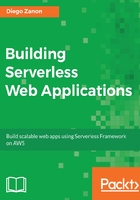
Scalability
With IaaS, you can achieve infinite scalability with any cloud service. You just need to hire new machines as your usage grows. You can also automate the process of starting and stopping servers as your demand changes. But this is not a fast way to scale. When you start a new machine, you usually need to wait for around 5 minutes before it can be usable to process new requests. Also, as starting and stopping machines is costly, you only do this after you are certain that you need. So, your automated process will wait some minutes to confirm that your demand has changed before taking any action.
IaaS is able to handle well-behaved usage changes, but it can't handle unexpected high peaks that happen after announcements or marketing campaigns. With serverless, your scalability is measured in milliseconds and not minutes. Besides being scalable, it's very fast to scale. Also, it scales per invocation without needing to provision capacity.
When you consider a high usage frequency in a scale of minutes, IaaS suffers to satisfy the needed capacity while serverless meets even higher usages in less time.
In the following graph, the left-hand side graph shows how scalability occurs with IaaS. The right-hand side graph shows how well the demand can be satisfied using a serverless solution:

With an On-Premises approach, this is a bigger problem. As the usage grows, new machines must be bought and prepared, but increasing the infrastructure requires purchase orders to be created and approved, you need to wait the new servers to arrive and you need to give time to your team to configure and test them. It can take weeks to grow, or even months if the company is very big and requests many steps and procedures to be filled in.